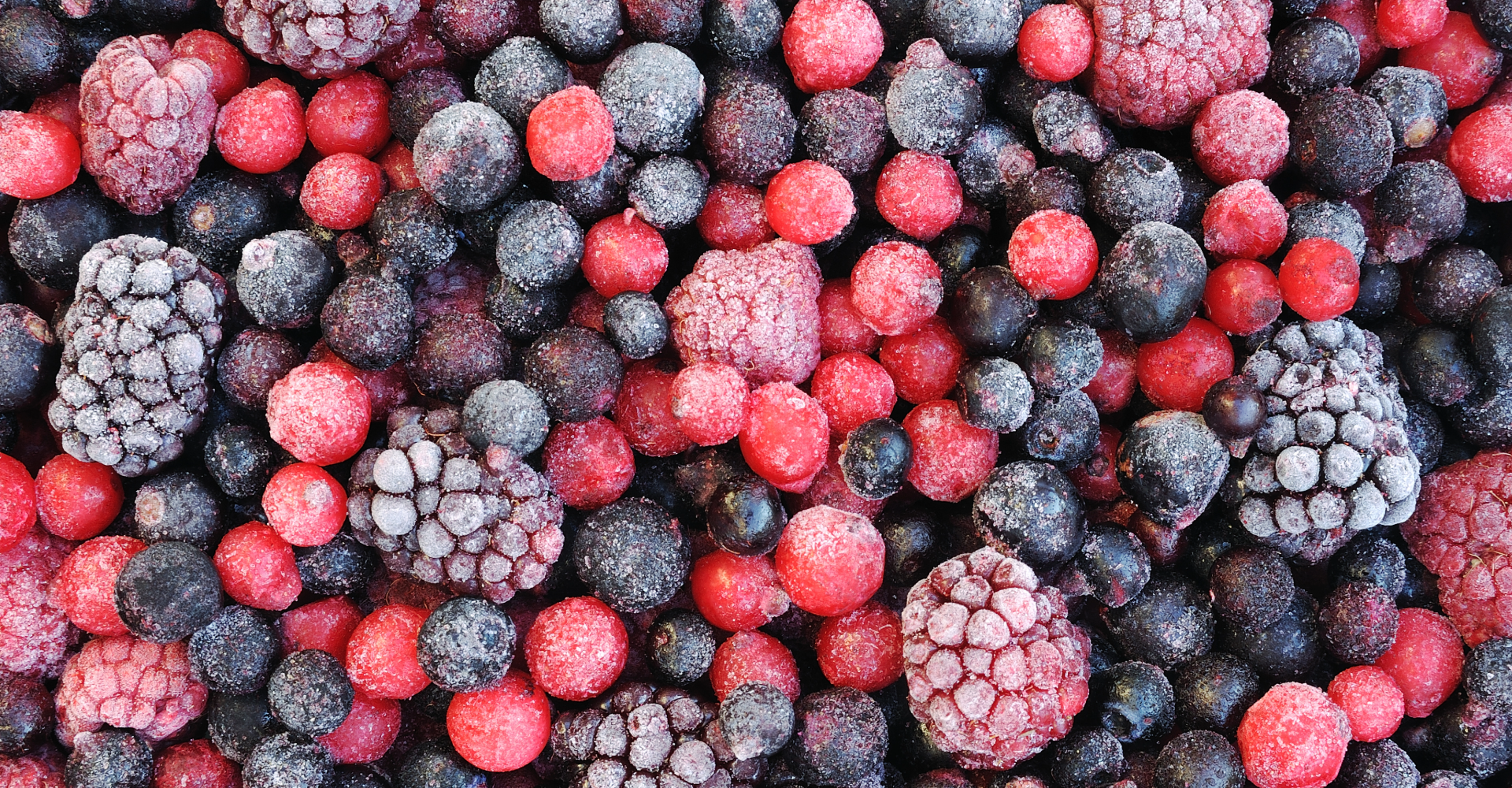
Frozen foods are often seen as the poorer sister to fresh or tinned foods, and perhaps - once upon a time (when fresh food was genuinely fresh, and frozen food was the un-sold fresh food leftovers) that may have been true.
These days however, the world of frozen food is vastly different, for the better. Most frozen food in Australia is snap frozen as soon as it is picked or cooked, and remains in a deep freeze environment (very cold!) until it is purchased by you.
Why does this matter? Because using this technique, freezing acts a very effective natural preservative that locks in nutrients without the need for any heat treatment (which reduces nutrient content) or artificial preservatives, meaning you get a product that is as, if not more, nutritious than many 'fresh' foods in the supermarket.
Of course, eating your fruits and vegetables when freshly picked is the holy grail. But if you - like many of us - don't have easy access to an abundant vegetable garden, frozen is a very handy and nutritious alternative.
Here, our dieitian outlines three key reasons why you should spend more time in the freezer aisle.
1. Frozen food is highly nutritious
Fresh fruits and vegetables begin to lose nutrients as soon as they are picked. Freezing foods significantly slows this loss of nutrients, allowing frozen foods to maintain their nutrient value for much longer periods of time.
- One study - published in Europe PubMed Central - found that green peas lost up to 50% of their nutritional value within 48 hours of being picked.
- Other studies have shown that frozen vegetables have similar antioxidant activity to supermarket fresh.
2. Frozen food is 'clean'
In our current food supply, many ready-made meals for children can be found on the ambient (not cold) supermarket shelves. So how is it that beef bolognese can survive, without spoiling, in a room temperature environment for so long? Often, because it has been heat treated. Heat treating food kills of bacteria that may be naturally present in raw ingredients. When products are heat treated in their packaging, they can live out of the fridge unopened for long periods of time. This is wonderful for supermarkets, who have plenty of ambient storage space (which is much cheaper for them than paying for fridges/freezers!). The bad news is that through heat treating, the nutrient value of foods also reduces. So while that beef bolognese should be very safe to consume after 6 months sitting on a shelf, it will also not be as nutritious as a freshly prepared version.
Freezing is an alternative to heat treating. A way of keeping food safe to eat, but without the need for any heat treating or artificial preservatives.
3. Frozen food can help reduce food waste (and save money)
One of the best things about frozen food is that it can help you reduce food waste, which Foodbank reports costs Australian households an average of $3,800 each year. It doesn't matter if you buy a frozen meal one week then decide you don't need it. It can live perfectly happily* in your freezer until you are ready to eat it.
Products that come in individual pieces (like frozen fruits & vegetables, or Audrey & Alfie finger foods!) also mean it's easy to just take out what you need when you need it, and keep the rest safely stored for another day.
*until the best-before date, of course. Always check the best-before date of frozen products.



Comments (0)
Back to Nutrition & Health